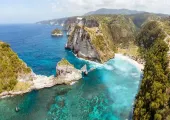12 Historical Attractions in Macau
Catalogue
- Nezha Temple
- Senado Square
- Lou Kau Mansion
- St.Dominic's Church
- Leal Sanado Building
- Saint Lawrence's Church
- Taipa Houses-Museum
- Moorish Barracks
- Mount Fortress
- Ruins of St.Paul's
- A-Ma Temple
- Dom Pedro V Theater
Show More
Macau is well known as Asia's gambling hub, and it's situated on the southeast coast of China. Macau is a small city and a popular destination for history, fashion, oriental and western cultures with prosperity and peace. Macau is within an area of 27.5 sq kilometers, and 95% of Chinese people reside here. The city is full of Portuguese buildings, and the street names also reflect Portuguese culture. The Macau name was derived from the word Magao, which was devoted to Mazu, an ancient sacred sea goddess. As per the local people, the magic word means the A-Ma Temple. In the sixteenth century, when the Portuguese people came to Macau, they asked a fisherman about the name of the land, and the fisherman said the word Magao. It is also known as "Las Vegas of China." The elegant Portuguese style buildings contribute a major role in Macau attractions. Two islands are outlying Macau, and those are islands of Taipa and Coloane. Macau has many adventure activities to offer in Macau tower, which includes Bungee Jumping, Skywalk, and many more. The Macau tower gives you the view of the entire city along with a fine-dining Chinese and Portuguese styled restaurant.
Nezha Temple is the oldest Buddhist and Taoist temple, and it was built in the year 1888. This temple is also known as Nazha, Nata, or Natcha. This temple dedicated to the Taoist worship deity, and it's a Chinese Buddhist Methodology. The official Taoist name is "Marshal of the Central Altar," and he was given the name "Third Lotus Prince" after he became a deity. Nezha Temple is small and beautiful, and its main Macau attractions. This traditional Chinese temple is a simple and 8.4 meters long and 4.51 meters wide, and it is a single chamber building. The entrance gate is five meters in-depth, and the building is grey. Nezha temple is located behind the St. Paul's Ruins, and it is the main Jesuit cathedral in the Macau region. The temple is renowned as one of the leading and historic sites of Macau enlisted on the UNESCO World Heritage List.

Senado Square is a popular Macau attraction and a public square in Macau. Senado Square is the fourth largest square covering an area of 3,700 square meters. The square was enlisted as UNESCO's World Heritage List of Macau in the year 2005, and this is the main historic Macau attractions. The square is named because it has been in front of the Leal Senado Building since the Ming Dynasty (1368-1644). This is where the local authorities used to review the troops at their inaugurations during the Portuguese control era. There was a statue in its middle in the year 1940 of a Portuguese soldier named Mesquita. Throughout the Qing Dynasty wars (1644-1911), he was responsible for the deaths of many Chinese soldiers. A fountain replaced the statue by the Chinese people, and then it was also known as "the fountain." The authority recruited several Portuguese experts in the early 1990s to pave the Senado Square with painted stones wave-patterned mosaic. The buildings around Senado Square have a long history and many western features, so they have been well preserved by the authority, and nobody can change the façades of these buildings. There are shopping centers around Senado Square and traditional Chinese restaurants. Senado Square is a famous Macau attraction for fashion clothes, famous snacks, and scenic surroundings.

The two-story Lou Kau Mansion is a Chinese-style mansion constructed of blue bricks. In Lou Kau House, three courtyards can find for better lighting and ventilation. Inside, visitors can discover beautifully coexisting Chinese architectural features with western styles. To be precise, Chinese-style brick carvings, wood carvings, and lime sculptures contrast well with Western-style iron handrails, colorful glass, and French doors, making it exceptionally fascinating and elegant Macau attractions. In the Lou Kau Mansion, the Macau Chinese Orchestra has conducted a large number of small-scale concerts. The traditional Chinese melodies played by the orchestra's excellent musicians are popular among both domestic and international tourists.
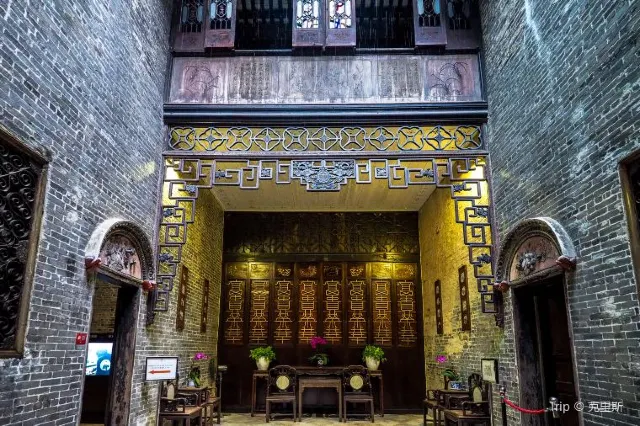
Located right in the heart of Macau's Senado Square, St. Dominic's Church was built in 1587 for the worship of Our Lady of the Rosary by three Spanish Dominican priests. The St. Dominic's Church has three halls: a strong brick-built arch divides the deep and wide main entrance from the church's structure. The St. Dominic's Church has three rooms: the deep and wide main hall is separated from the body of the church by a solid brick-built arch. The chapter is divided into three layers from top to bottom, and columns of different styles separate each layer from the door and window. The head of the Church of St. Dominic is made up of triangular fins. The baroque style of churches from the seventeenth century, influenced by both Portuguese and Spanish styles. There are also many unique paintings and sculptures in the St. Dominic's Church, of which the most prominent is the statue of Jesus Christ. There will be a better understanding of the features of ancient Portuguese religions, and associated arts attracted the visitors and added value to Macau attractions.
Leal Senado Building, located in Macau's center, overlooks Senado Square and is home to the Municipal Council of Macau. It is now a part of Macau's Historic City on the World Cultural Heritage Lists of UNESCO. Leal Senado is a house of gallery holding regular exhibitions on the ground floor, a public library storing old foreign books between the 17th century and mid-20th century, and an auditorium with a chapel. Relatively quiet courtyard in the Portuguese style, with a flower nursery in the form of a celestial globe and a bust of the Portuguese poet Camoes. Leal Senado will be illuminated with beautiful lights every year as it reaches Christmas, so will the Senado Square. According to our tour guide, Leal Senado Building was constructed in the year 1784. It is still the civic chamber of Macau attractions, and it is from here that most significant city-related decisions have been made. The house retains original features, including a greenhouse in the courtyard. On the first floor, there is also an ornate library, and upstairs there is a small chapel. Inside the building, there is a mini garden and a free toilet for tourists.
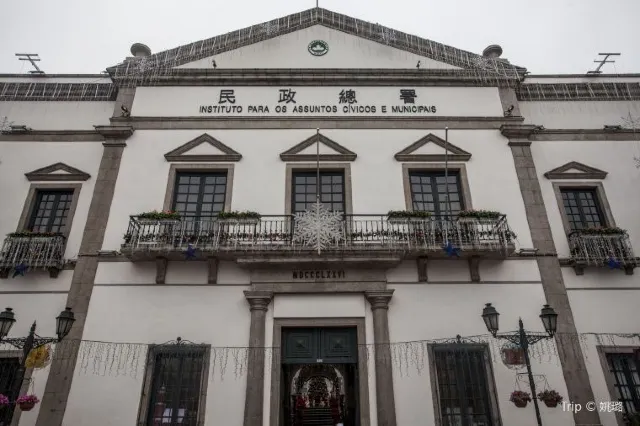
The oldest church of Macau is St. Lawrence's Church, also known as Feng Shun Tang (Church of Smooth-Sailing Wind). It was first founded in memory of St. Lawrence, who is considered a patron saint of navigation by Portuguese, between 1558 and 1560. The Church of St. Lawrence was restored several times. At present, the church looks similar to what it was in the year 1618. It is surrounded by a garden and filled with tall palms; St. Lawrence's Church displays a Baroque architectural style based on classical European architecture. Its yellow walls and symmetrical bell towers on two sides, this Christian church looks impressive and solemn, respectively housing a clock to tell the time and a bronze bell to rock and announce the mass. On the tiled roof is placed an ancient stone-carved cross. With massive columns and delicate drop lights, the interior is even more majestic and charming. St. Lawrence's statue lies in the altar with the right-hand bible and the left-hand plate. St. Laurence is a sea god in the eyes of Portuguese who protects people and tells them the direction of the wind.
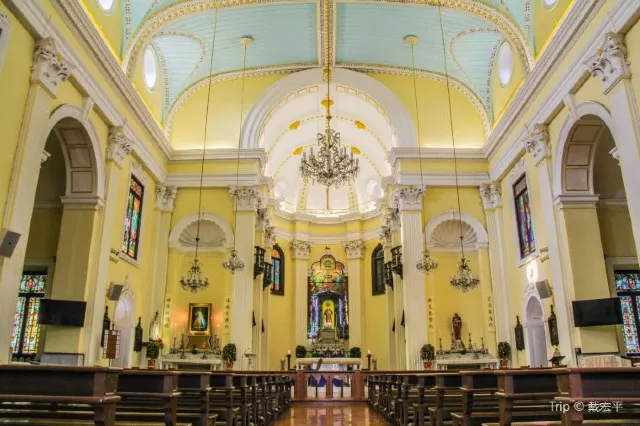
Considered one of the island's cultural relics and heritage, the Taipa Houses-Museum contains five distinctive greenhouses of Portuguese architecture theme, including the "Macanese Living Museum," the "Exhibitions Gallery," the "Creative House," the "Nostalgic House" and the "Reception Room." In 1992, for its exceptional beauty and significant architectural quality, the Taipa Houses-Museum was recognized as one of Macao's top eight scenes. In the old days, adjacent to the Portuguese residential complex was seen as a vast mangrove swamp. Yet today, the museum is surrounded by leisure and entertainment facilities on a large scale, witnessing the island's rapid urban development. The ground floor is a bookstore that primarily sells books on humanities, social sciences, art design, and local magazines, while the first floor is an exhibition area that exhibits and sells artworks by outstanding local and international artists. This museum attracts visitors and comes under Macau attractions.
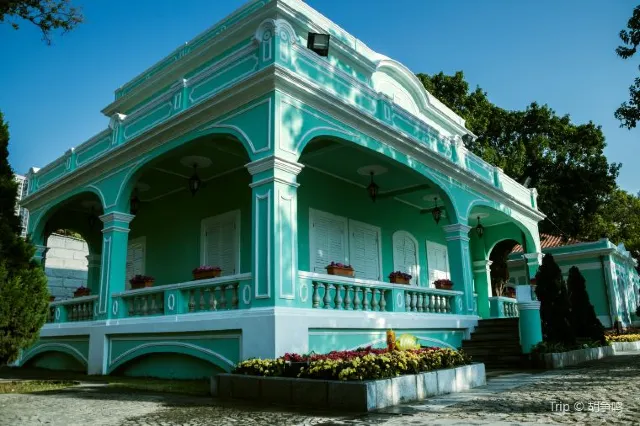
Initially, the Moorish Barracks were Indian soldiers ' barracks appointed from Goa to Macau. A masterpiece of architecture is the building itself. Instead of a European style often seen on Avenida de Almeida Ribeiro, the house features a mixture of Arab and Gothic architectural styles, the latter dominating. It has been Macau Port Authority's office building since the 19th century. The architect chosen for this beautiful building was the Italian Cassuto. The long veranda, with its refreshing columns and windows, is the most attractive part of the building showing an Islamic color. Dozens of pillars of ivory yellow lead the eyes from the floral barriers to the pointed arches between the columns. It is a designated part of Macau's Historic City and Macau attractions, which was listed on the 2005 World Heritage List. It is 67.5 meters long and 37 meters wide. Standing on a granite platform above the road, it is in the middle two-story and the remaining one-story portion of it. The house is adjoining the three sides by a four-meter-wide veranda. The winding gallery with pointed arches supported by pillars allows walkers to enjoy the outdoor scenery and adds charm to the entire building. The whole building, except the granite pedestals on the street level, is painted light yellow and chosen with white floral designs, emanating a sense of beauty and elegance.

The Mount Fortress, one of the major Macau attractions which were used to fend off a Dutch invasion of Macao in the year 1622, is situated next to the ruins of St. Paul. Unfortunately, a massive fire burned down the main building, leaving only the flat, trapezoidal base of the fortress. It's packed with greenery today, and it's one of the best points of view to see the area. The Macao Museum was built inside the fortress in 1989, providing tourists with an insight into the history and culture of Macau. Mount Fortress is built on top of Mount Hill, 52 meters above sea level. The fortress, in the shape of a trapezoid, covers an area of around 8,000 square meters. The walls are 9 meters high at the top and are made of solid rammed earth, further protected by a dense stucco of ground oyster shells. For the construction of 32 cannons, the parapets have been crenelated, and the two corners of the southeast wall have watchtowers. There are no battlements on the walls facing the Chinese Mainland, suggesting that the fortress was constructed with defending against sea attacks.
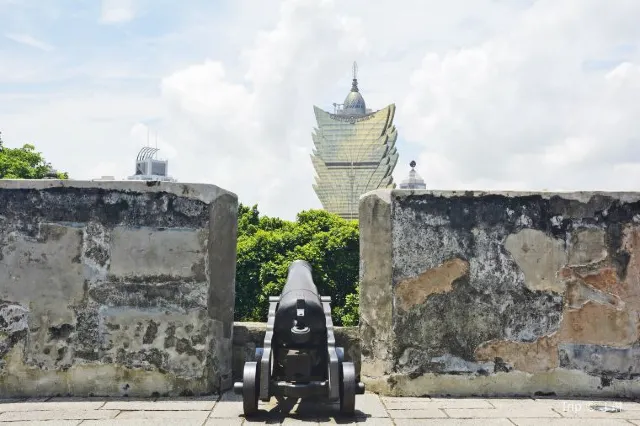
The St. Paul's ruins are adjacent to the famous Macau attractions, the Museum of Macau and Mount Fortress. The front facade and the grand stone stairs are the only remnants of the largest church in East Asia at the time. Sadly, Macau was struck by a violent typhoon in the year 1835, and for the third time, the church caught fire, leaving history to its glory. According to historical documents, St. Paul's Church, constructed with white stones, had an extensive vaulted roof. It had three halls beautifully decorated. Ruins of St. Paul's, been built with granite, has a baroque facade rich in ornamentation but with classic oriental elements. The design has five grades from the bottom up. The two gates on either side are painted in the style of' HIS' with bas-reliefs. The second-tier features ten three window Corinthian columns. In each of the four tabernacles between columns, a Catholic saint is consecrated. It has been said that the two levels as a whole reflect the Jesus Society and the missionaries' activities. The other three grades are the most decorated. Madonna's statue stands at the center of the third tier, while Jesus ' statue stands at the fourth.
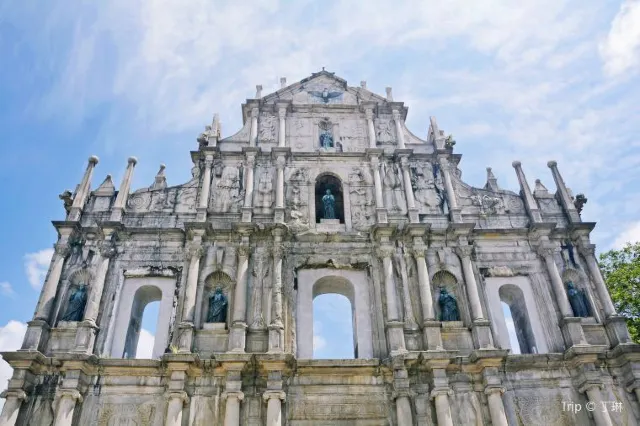
A-Ma Temple is Macau's oldest temple, based in the city's southeastern part. A-Ma Temple is one of the famous Buddha halls. In the year 1488 of the Ming Dynasty (1368-1644), the A-Ma Temple was built to honor Mazu, the holy sea goddess who blesses the fishermen. Now there are plenty of folktales about the great goddess narrated in the littoral lands. The A-Ma Temple is a destination offering silence and spectacular views. It contains six main parts, all of which make up a series of classical Chinese architectural treasures, and this is all guarded by stone lions. While crossing the gateway, a winding path leads to the Hongren Hall. Here a Mazu idol is revered, and it has been claimed that the hall has the complex's most extended history. The construction is done in a simple style, mostly with bricks and stones. Compared to the other galleries, the Zhengjiao Chanlin (a Buddhist hall) has been designed in terms of both size and architectural style. In addition to an ancient architectural complex, A-Ma Temple also has a measure of Chinese culture that is rich and considered as a must-visit Macau attraction. Staying and watching the various poems and inscriptions carved on the stone along the cliff is worth your time. Also, there are many male and female disciples gathering here every year on the days of Mazu's birthday and the Chinese New Year. To pay homage and wish for good fortune, they burn plenty of incense.
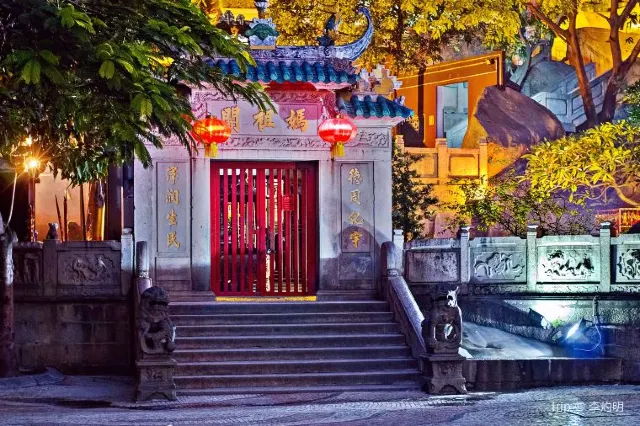
Dom Pedro V Theater is considered the first western theater in China as an ancient theater on the Largo de Santo Agostinho. Portuguese built it in Macau in the year 1860, in memory of the theater was Portuguese king Pedro V. Initially, only the central part was constructed, and colonnades, arcades, and the lintel triangle were added in the year 1873. The building includes a theater, but also a ballroom, a billiard parlor, a reading room, and the like. It used to be the auditorium and gathering place for Portuguese people living in Macau, but Dom Pedro V Theater was not open to the public until 1993 due to the destruction of termites. The main body remains intact following reconstruction in the year 1993 and the year 2001. UNESCO listed it as part of Macau's historical center under Macau attractions in the World Cultural Heritage in the year 2005.
These are the top 12 historical attractions of Macau, which are worth visiting. Travelers can easily commute from one place to another in Macau as there are buses, taxis, and shuttles. Macau is a beautiful clean city and the safest place to live. Macau offers traditional Chinese foods along with a picturesque hilly landscape. The streets of Macau are clean, and the people of Macau are fitness freak. There are many luxurious hotels with gambling casinos in Macau, and the whole night the city is awake for gambling.
Trending Travelogues
Popular Trip Moments
Popular Travel Types
Popular Attractions
Popular Ranked Lists
Popular Destinations
Recommended Attractions at Popular Destinations
About











Site Operator: Trip.com Travel Singapore Pte. Ltd.



